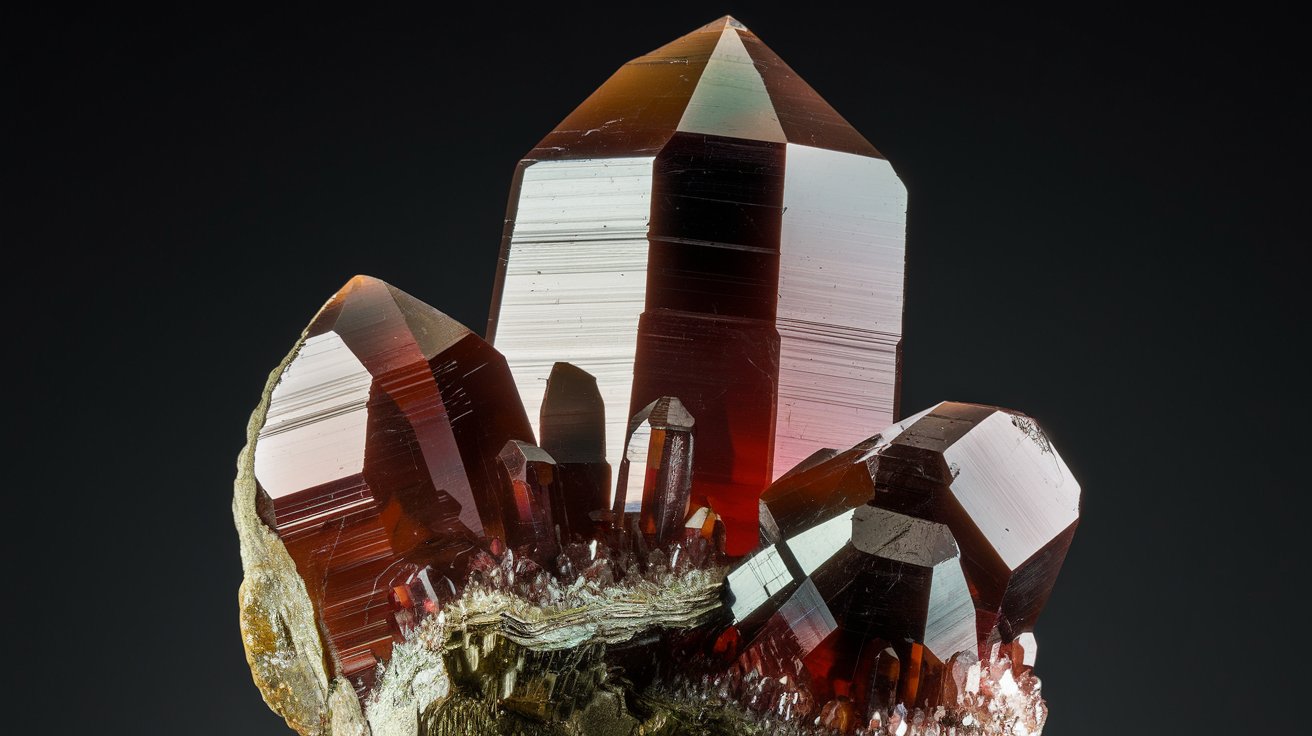
Briartite is a rare mineral that captures the curiosity of geologists and mineral enthusiasts alike. But what exactly makes Briartite so special? Found in hydrothermal veins, this mineral boasts a unique composition of copper, iron, zinc, and sulfur. Its striking metallic luster and complex crystal structure make it a standout in any collection. Did you know that Briartite was first discovered in 1965 in Belgium? Named after Belgian mineralogist Gaston Briart, this mineral has since been found in various locations worldwide. Whether you're a seasoned collector or just starting, learning about Briartite's properties, origins, and uses can be incredibly fascinating. Ready to dive into 30 intriguing facts about this captivating mineral? Let's get started!
Key Takeaways:
- Briartite is a rare mineral with a unique composition of copper, iron, zinc, and germanium. It forms in hydrothermal veins and is a fascinating subject for geological and mineralogical research.
- The Kipushi Mine in the Democratic Republic of Congo is where Briartite was first discovered. Its rarity and metallic luster make it valuable to collectors, and its potential as a source of germanium adds to its intrigue.
What is Briartite?
Briartite is a rare mineral with a unique composition and fascinating properties. It has intrigued scientists and collectors alike due to its distinctive characteristics and formation process. Here are some intriguing facts about this mineral.
-
Briartite is a sulfide mineral composed of copper, iron, and zinc.
-
It was first discovered in the Kipushi Mine in the Democratic Republic of Congo.
-
The mineral was named after Gaston Briart, a Belgian geologist who made significant contributions to the study of the Kipushi Mine.
-
Briartite typically forms in hydrothermal veins and is often associated with other sulfide minerals.
-
Its crystal system is orthorhombic, meaning it has three mutually perpendicular axes of different lengths.
Physical Properties of Briartite
Understanding the physical properties of Briartite can help in identifying and studying this mineral. Here are some key physical characteristics.
-
Briartite crystals are usually metallic in appearance.
-
The mineral has a hardness of 3.5 to 4 on the Mohs scale.
-
It exhibits a grayish-black color with a metallic luster.
-
Briartite has a specific gravity of approximately 4.5.
-
The mineral is opaque, meaning light does not pass through it.
Chemical Composition of Briartite
The chemical makeup of Briartite is what sets it apart from other minerals. Here are some details about its composition.
-
Briartite's chemical formula is Cu2(Fe,Zn)GeS4.
-
It contains copper (Cu), which gives it its metallic properties.
-
The presence of iron (Fe) and zinc (Zn) contributes to its unique composition.
-
Germanium (Ge) is also a significant component, making Briartite one of the few minerals containing this element.
-
The sulfur (S) in Briartite forms strong bonds with the metal ions, creating a stable structure.
Formation and Occurrence
Briartite's formation process and where it can be found are equally fascinating. Here are some facts about its occurrence.
-
Briartite forms in hydrothermal environments, where hot, mineral-rich water flows through cracks in rocks.
-
It is often found in association with other minerals like sphalerite, chalcopyrite, and galena.
-
The Kipushi Mine, where Briartite was first discovered, is known for its rich deposits of various minerals.
-
Briartite can also be found in other locations around the world, including Namibia and Germany.
-
The mineral typically forms in small quantities, making it a rare find for collectors.
Uses and Applications
While Briartite is not widely used in industry, it has some interesting applications. Here are a few examples.
-
Briartite is primarily of interest to mineral collectors due to its rarity and unique properties.
-
The presence of germanium in Briartite makes it a potential source of this element, which is used in electronics and fiber optics.
-
Researchers study Briartite to understand the geological processes that lead to the formation of hydrothermal minerals.
-
The mineral's unique composition makes it a subject of interest in mineralogical research.
-
Briartite samples are often displayed in museums and educational institutions to showcase rare minerals.
Fun Facts about Briartite
Here are some additional fun and lesser-known facts about Briartite that might surprise you.
-
Briartite is sometimes referred to as "Briart's mineral" in honor of its namesake.
-
The Kipushi Mine, where Briartite was discovered, is also known for its spectacular mineral specimens.
-
Briartite's metallic luster can make it difficult to distinguish from other sulfide minerals without detailed analysis.
-
The mineral's rarity means that high-quality specimens can be quite valuable to collectors.
-
Briartite's unique combination of elements makes it a fascinating subject for geochemical studies.
The Final Word on Briartite
Briartite, a fascinating mineral, holds a unique place in the world of geology. Its striking blue hue and complex chemical composition make it a subject of interest for both amateur rockhounds and seasoned geologists. Found primarily in the Kipushi Mine in the Democratic Republic of Congo, this mineral is a rare blend of copper, iron, and germanium sulfide. Its rarity and beauty make it a sought-after specimen for collectors.
Understanding briartite's properties and origins not only enriches our knowledge of the Earth's geological processes but also highlights the intricate beauty hidden beneath our feet. Whether you're a student, a collector, or just someone curious about the natural world, briartite offers a glimpse into the complexity and wonder of mineralogy. Keep exploring, and who knows what other hidden gems you might uncover!
Frequently Asked Questions
Was this page helpful?
Our commitment to delivering trustworthy and engaging content is at the heart of what we do. Each fact on our site is contributed by real users like you, bringing a wealth of diverse insights and information. To ensure the highest standards of accuracy and reliability, our dedicated editors meticulously review each submission. This process guarantees that the facts we share are not only fascinating but also credible. Trust in our commitment to quality and authenticity as you explore and learn with us.


